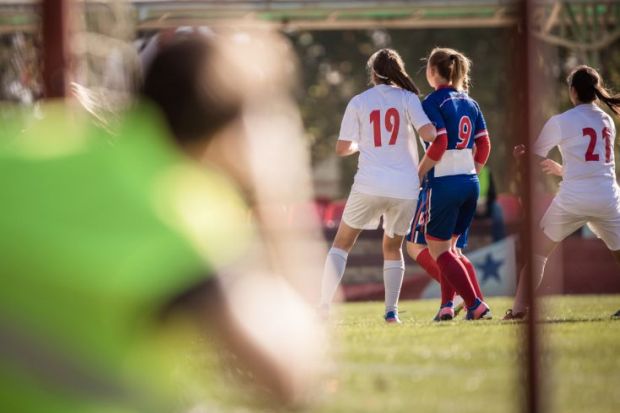The global titans of football who have historically dominated the game were noticeably absent in the later stages of this year’s Women’s World Cup finals. France and Germany were both knocked out in the quarter-finals, Spain didn’t move out of the Round of 16, and Brazil and Argentina failed to make it past the initial group phases.
Meanwhile, the US Women’s National Soccer Team (USWNST) took home the championship – a feat that the nation’s men’s team, which didn’t even qualify for the 2018 tournament, could only dream of.
The outstanding performance from the US team comes after decades of investment and talent cultivation in the US through its unique collegiate sport network. Competition at the university level in the US has made it possible for women’s sport to thrive.
Unlike the European model, in which women move through the ranks of privately funded football clubs – competing for status and marketing funds with the more profitable and popular male teams – talented female athletes in the US are shown a clear career path from an early age. They’re supported by school-level programmes and have opportunities to get a higher education while playing through scholarships.
The National Collegiate Athletic Association, the authoritative member body on college-level athletic competition, allows the top-tier Division I institutions 14 full scholarships, which can be divided into partial scholarships for as many players as athletic departments see fit. Second-tier Division II schools are also allowed to award athletic scholarships.
All this was made possible by the Title IX Education Amendments Act of 1972, which states: “No person in the United States shall, on the basis of sex, be excluded from participation in, be denied the benefits of, or be subjected to discrimination under any education program or activity receiving Federal financial assistance.” This landmark legislation paved the way for women’s athletics to flourish.
Not surprisingly, the alma maters of many members of the 2019 USWNST are universities with some of the best female football programmes in the country, including Portland, where co-captain Megan Rapinoe played; Stanford, the 2017 College Cup champion and where three players earned their degrees, including Kelley O’Hara; and North Carolina, which made it to the 2018 College Cup finals to compete against Florida State University and where five USWNST players studied.
But it’s not just the top US players who have benefited from US universities’ athletic departments. England defender Lucy Bronze played one season for the University of North Carolina before transferring to Leeds Beckett University.
Canada’s Julia Grosso is currently at the University of Texas at Austin, Sophie Schmidt played at the University of Portland and forward Deanne Rose is at the University of Florida.
Thailand’s forward Suchawadee Nildhamrong is playing at the University of California, Berkeley; Nigeria’s Uchenna Kanu plays at Southeastern University in Florida and New Zealand midfielder Daisy Cleverley is at Berkeley. The list goes on, a testament to the global impact of these university programmes.
However, the preparation of outstanding female athletes at the higher education level and their growing fan base throw into even starker relief the discrepancies in support and investment they receive compared with male athletes once they graduate.
The current lawsuit brought against the US Soccer Federation by the USNWST for equal pay with their male counterparts is an opportunity for the national soccer body to appropriately reward deserving world-class talent and to show players at the college level that a lifelong career after they graduate is possible.
At a time when good news stories about the US are rare, the USWNST’s fourth World Cup win is definitely a bright spot for the country. But so too should be its universities and their almost 50-year contribution towards improving gender equality in athletics around the world.
Sara Custer is digital editor at Times Higher Education.
